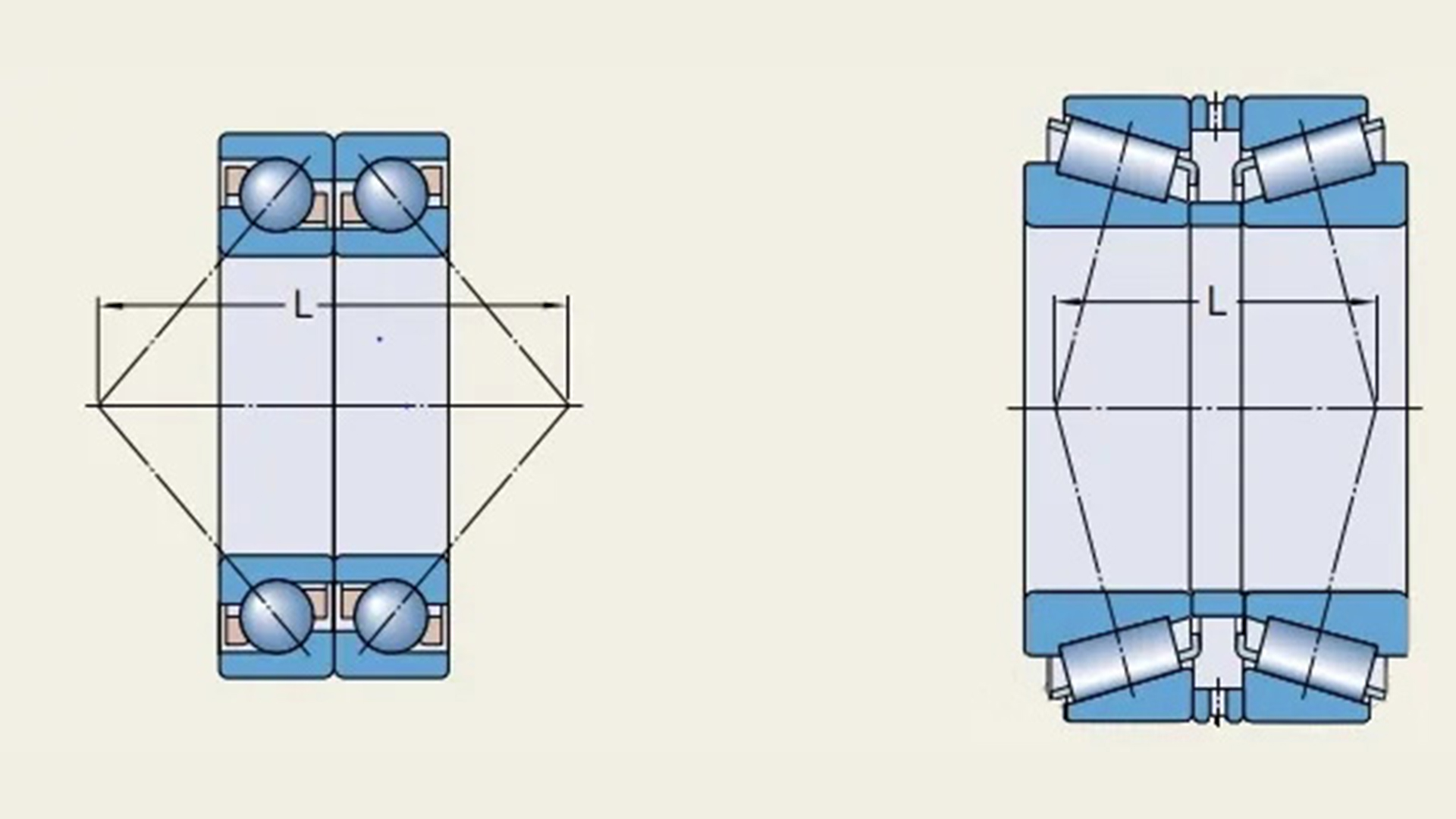Newsroom
What is the difference between face-to-face and back-to-back arrangements of angular contact bearings?
2024-08-23Rolling bearings are crucial components of rotating equipment. The load on the equipment, whether axial or radial, is ultimately transmitted to the equipment's support via the bearings.
The selection of bearings is determined by various working conditions, such as design, load conditions, bearing arrangement, type of lubrication, etc. While choosing the right bearing is essential, proper installation is even more critical. Following the correct installation procedures is key to achieving the expected bearing lifespan.
Understanding the paired bearing configuration during selection and assembly is vital. Incorrect installation and a lack of understanding of the equipment application can lead to operational issues such as slippage or overheating.

Figure 1: Combination of paired bearings (tandem, back-to-back, face-to-face)
Paired bearings are a combination of two bearings. The same type of single-row angular contact ball bearings and tapered roller bearings are installed in either a back-to-back (divergent load lines) or face-to-face (convergent load lines) arrangement and subjected to axial preload. When paired bearings are mounted on a shaft, the inner or outer rings are clamped with preload, which provides greater radial and axial stiffness.
1. Back-to-Back Arrangement:
Also known as the O arrangement (usually identified by the DB suffix on matched bearings), this configuration offers the greatest stability and rigidity. In this arrangement, the inner ring end faces are designed to contact each other to achieve preload, and the assembly can withstand axial loads in both directions as well as radial loads.

Figure 2: Back-to-back arrangement
Why does this arrangement provide higher stiffness and stability?
Between the inner and outer rings is a combination of the cage and rolling elements. When the inner ring is pushed, the rolling elements are forced toward the outer ring. The rolling elements are also constrained by the outer ring of the bearing. Therefore, the outer ring exerts a reaction force on the applied load, which is directed toward the centerline of the shaft. Depending on the contact angle, the reaction forces of the two bearings will diverge, and the distance between the two opposing forces is L (see Figure 2).
Since L is greater than the width of the bearing, this is why the back-to-back arrangement has better resistance to moment forces within the bearing system.
Summary of the advantages of the back-to-back configuration:
High rigidity
Can withstand moment loads
Applications of Back-to-Back Configuration in Centrifugal Pumps:
Shorter pump shafts, such as single-stage cantilever centrifugal pumps, small double-support pumps, etc.
Higher rigidity requirements
High-speed applications often use preload installation methods
2. Face-to-Face Arrangement:
Also known as the X arrangement (usually identified by the DF suffix on matched bearings), this configuration can tolerate some degree of misalignment but cannot support moment loads as effectively as the back-to-back arrangement. If misalignment between bearing positions cannot be avoided, it is recommended to use the face-to-face bearing arrangement.

Figure 3: Face-to-face arrangement
In this arrangement, compared to the back-to-back arrangement, the reaction load lines converge inward, reducing the span L (see Figure 3). Therefore, the rigidity is reduced, and the misalignment tolerance is increased.
Summary of the advantages of the face-to-face arrangement:
Compensates for some misalignment, but the rigidity is not as good as the back-to-back arrangement
Applications of Face-to-Face Configuration in Centrifugal Pumps:
Longer pump shafts, such as overhung centrifugal pumps
High-speed applications often use preload installation methods
3. Clearance and Preload:
The bearing surfaces used for pairing must be precisely machined and ground to provide preload during installation. Preload is achieved by compressing the gap between the end faces of the outer or inner rings, depending on the type of arrangement.
In Figure 4, when the inner rings are clamped in a back-to-back arrangement, a certain gap remains between the outer ring end faces, which is the axial clearance of the bearing.
When the outer rings are clamped in a face-to-face arrangement, a similar gap remains between the inner ring end faces, which is also the axial clearance of the bearing set.

Figure 4: Installation with clearance
In Figure 5, when the inner rings are clamped in a back-to-back arrangement, the force is transmitted through the rolling elements to the outer ring, generating resistance between the outer ring and its end face, with both the inner and outer rings compressing the rolling elements, turning the bearing into negative clearance.
When the outer rings are clamped in a face-to-face arrangement, the force is transmitted through the rolling elements to the inner ring, generating resistance between the inner ring and its end face, with both the inner and outer rings compressing the rolling elements, turning the bearing into negative clearance.

Figure 5: Preloaded bearing
Depending on the application, it may be necessary to preload the bearing configuration. For example:
When high rigidity or positional control is required, preload is appropriate.
If the bearing is under very light load or no external load during operation, preload is necessary to ensure the minimum load.
For more information, feel free to contact QIBR


